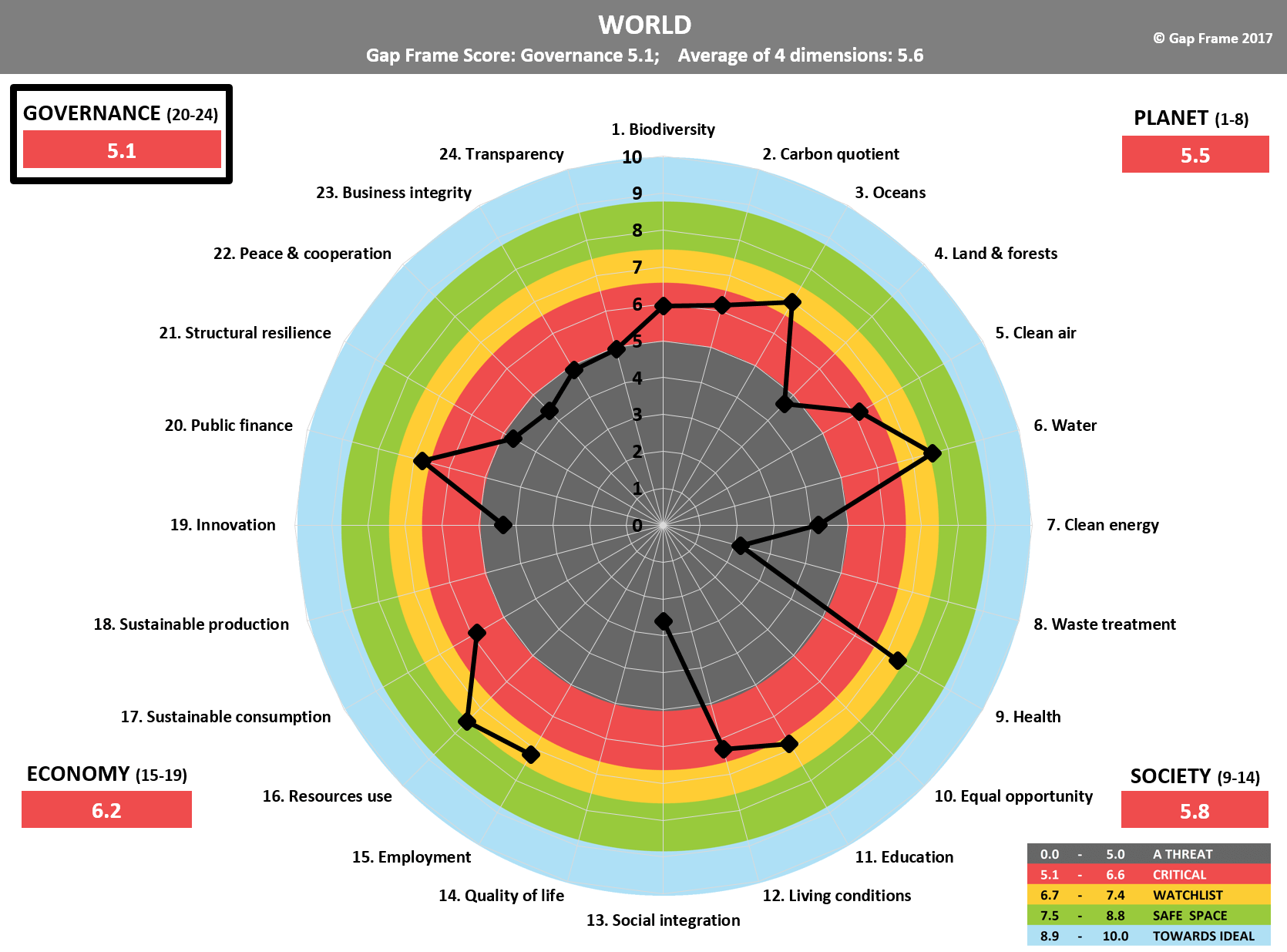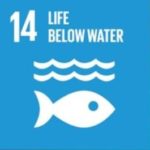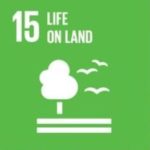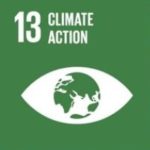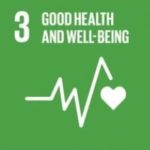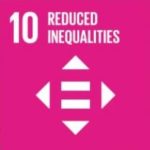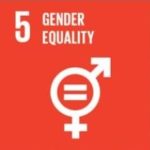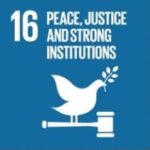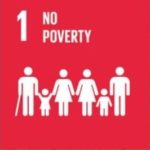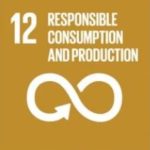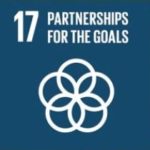
Map Global EMPTY
The World
Global
Population: 7.4 billion

GAPFRAME Score: 5.1
Priority Dimension: Governance (Inner circle)
Average of 4 Dimensions: 5.6 (Outer circle)
| 0 - 5.0 | A THREAT | 5.1 - 6.6 | CRITICAL | 6.7 - 7.4 | WATCHLIST | 7.5 - 8.8 | SAFE SPACE | 8.9 - 10 | TOWARDS IDEAL |
- Waste treatment (2.2) – planet
- Social integration (2.6) – society
- Clean energy (4.2) – planet
PRIORITY ISSUES
- Innovation (4.3) – economy
- Peace & cooperation (4.4) – governance
- Land & forests (4.7) – planet
- Water (7.6) – planet
- Resources use (7.5) – economy

Map Global Lowest Score

Map Global PLANET

Map Global SOCIETY

Map Global ECONOMY

Map Global GOVERNANCE

Map Global AVERAGE OF 4 DIMENSIONS
| 0 - 5.0 | A THREAT | 5.1 - 6.6 | CRITICAL | 6.7 - 7.4 | WATCHLIST | 7.5 - 8.8 | SAFE SPACE | 8.9 - 10 | TOWARDS IDEAL |
| COUNTRY | REGION | GEOPOLITICS | GAP FRAME SCORE | GAP FRAME RANK | PLANET | SOCIETY | ECONOMY | GOVERNANCE | AVERAGE OF 4 DIMENSIONS | AVERAGE RANK |
|---|---|---|---|---|---|---|---|---|---|---|
| Afghanistan | Indian Subcontinent | Least developed countries | 156 | 4.63 | 156 | |||||
| Albania | Southern Europe | Developed regions | 5.55 | 49 | 6.01 | 6.64 | 6.18 | 5.55 | 6.09 | 62 |
| Algeria | Northern Africa | Developing regions | 4.82 | 91 | 5.49 | 5.97 | 4.82 | 4.86 | 5.28 | 129 |
| Andorra | Southern Europe | Developed regions | 156 | 156 | ||||||
| Angola | Middle Africa | Least developed countries | 4.12 | 122 | 6.22 | 4.12 | 4.24 | 4.35 | 4.73 | 147 |
| Antigua and Barbuda | Central America | Developing regions | 156 | 7.45 | 156 | |||||
| Argentina | South America | Developing regions | 5.30 | 65 | 6.19 | 6.98 | 6.29 | 5.30 | 6.19 | 54 |
| Armenia | Middle East | Developing regions | 5.97 | 30 | 6.19 | 6.01 | 6.23 | 5.97 | 6.10 | 61 |
| Australia | Australasia (Oceania) | Developed regions | 5.43 | 55 | 5.43 | 7.28 | 6.44 | 8.00 | 6.79 | 22 |
| Austria | Western Europe | Developed regions | 6.89 | 2 | 6.89 | 6.96 | 7.66 | 7.27 | 7.19 | 9 |
| Azerbaijan | Middle East | Developing regions | 5.45 | 54 | 5.97 | 5.55 | 5.45 | 5.66 | 5.66 | 99 |
| Bahamas | Central America | Developing regions | 156 | 4.95 | 156 | |||||
| Bahrain | Middle East | Developing regions | 4.06 | 126 | 4.06 | 6.53 | 5.71 | 5.67 | 5.49 | 114 |
| Bangladesh | Indian Subcontinent | Least developed countries | 5.02 | 81 | 5.03 | 5.09 | 6.12 | 5.02 | 5.32 | 124 |
| Barbados | Central America | Developing regions | 156 | 3.95 | 6.52 | 156 | ||||
| Belarus | Eastern Europe | Developed regions | 4.94 | 87 | 5.42 | 6.75 | 4.94 | 5.70 | 96 | |
| Belgium | Western Europe | Developed regions | 5.92 | 34 | 5.92 | 7.67 | 6.60 | 7.29 | 6.87 | 19 |
| Belize | Central America | Developing regions | 156 | 7.28 | 156 | |||||
| Benin | Western Africa | Least developed countries | 4.17 | 120 | 7.15 | 4.17 | 6.47 | 6.80 | 6.15 | 56 |
| Bhutan | Indian Subcontinent | Least developed countries | 4.59 | 98 | 6.53 | 5.05 | 4.59 | 5.82 | 5.50 | 113 |
| Bolivia | South America | Developing regions | 5.35 | 63 | 7.19 | 5.35 | 6.20 | 5.48 | 6.05 | 65 |
| Bosnia and Herzegovina | Southern Europe | Developed regions | 4.42 | 107 | 5.03 | 6.64 | 4.42 | 5.94 | 5.51 | 111 |
| Botswana | Southern Africa | Developing regions | 5.36 | 60 | 6.14 | 5.36 | 6.37 | 6.99 | 6.22 | 52 |
| Brazil | South America | Developing regions | 5.55 | 47 | 6.04 | 5.97 | 7.01 | 5.55 | 6.14 | 58 |
| Brunei | South-East Asia | Developing regions | 156 | 6.71 | 5.73 | 156 | ||||
| Bulgaria | Eastern Europe | Developed regions | 5.99 | 29 | 5.99 | 6.82 | 6.65 | 6.11 | 6.39 | 41 |
| Burkina Faso | Western Africa | Least developed countries | 2.99 | 151 | 6.90 | 2.99 | 6.29 | 6.07 | 5.56 | 106 |
| Burundi | Eastern Africa | Least developed countries | 3.80 | 133 | 6.59 | 3.80 | 4.99 | 4.94 | 5.08 | 136 |
| Cabo Verde | Western Africa | Developing regions | 4.65 | 96 | 4.65 | 6.47 | 6.50 | 5.56 | 5.79 | 82 |
| Cambodia | South-East Asia | Least developed countries | 5.13 | 75 | 6.83 | 5.13 | 5.62 | 5.29 | 5.72 | 92 |
| Cameroon | Middle Africa | Developing regions | 4.45 | 106 | 7.19 | 4.45 | 6.52 | 4.96 | 5.78 | 84 |
| Canada | North America | Developed regions | 5.45 | 53 | 5.45 | 7.26 | 6.77 | 7.75 | 6.81 | 20 |
| Central African Republic (CAR) | Middle Africa | Least developed countries | 5.64 | 41 | 6.88 | 6.56 | 5.64 | 6.36 | 42 | |
| Chad | Middle Africa | Least developed countries | 2.29 | 155 | 6.50 | 2.29 | 5.56 | 5.29 | 4.91 | 141 |
| Chile | South America | Developing regions | 6.16 | 20 | 6.16 | 6.39 | 6.35 | 6.96 | 6.47 | 35 |
| China | Eastern Asia | Developing regions | 3.53 | 140 | 3.53 | 5.19 | 6.23 | 4.50 | 4.86 | 143 |
| Colombia | South America | Developing regions | 5.41 | 57 | 6.48 | 5.41 | 6.32 | 5.82 | 6.01 | 70 |
| Comoros | Eastern Africa | Least developed countries | 156 | 3.88 | 156 | |||||
| Costa Rica | Central America | Developing regions | 6.61 | 5 | 6.61 | 7.21 | 7.28 | 6.82 | 6.98 | 15 |
| Cote d'Ivoire (Ivory Cost) | Western Africa | Developing regions | 3.35 | 145 | 6.96 | 3.35 | 5.90 | 5.37 | 5.39 | 121 |
| Croatia | Southern Europe | Developed regions | 5.48 | 52 | 5.48 | 6.78 | 6.69 | 5.83 | 6.19 | 53 |
| Cuba | Central America | Developing regions | 5.28 | 67 | 5.96 | 7.53 | 5.28 | 6.26 | 51 | |
| Cyprus | Middle East | Developing regions | 5.01 | 82 | 5.01 | 7.03 | 6.73 | 6.40 | 6.29 | 47 |
| Czech Republic | Eastern Europe | Developed regions | 6.35 | 12 | 6.35 | 6.47 | 6.92 | 6.36 | 6.52 | 33 |
| Democratic Republic of the Congo | Middle Africa | Least developed countries | 5.13 | 74 | 6.76 | 5.24 | 5.13 | 5.71 | 94 | |
| Denmark | Northern Europe | Developed regions | 6.51 | 8 | 6.51 | 7.75 | 7.26 | 8.43 | 7.49 | 4 |
| Djibouti | Eastern Africa | Least developed countries | 156 | 5.58 | 156 | |||||
| Dominica | Central America | Developing regions | 156 | 7.27 | 156 | |||||
| Dominican Republic | Central America | Developing regions | 5.01 | 83 | 6.13 | 5.34 | 6.50 | 5.01 | 5.74 | 89 |
| Ecuador | South America | Developing regions | 6.14 | 22 | 6.60 | 6.72 | 6.14 | 6.78 | 6.56 | 29 |
| Egypt | Northern Africa | Developing regions | 3.62 | 136 | 4.70 | 5.67 | 5.67 | 3.62 | 4.91 | 140 |
| El Salvador | Central America | Developing regions | 5.62 | 42 | 5.62 | 5.95 | 7.36 | 6.45 | 6.35 | 45 |
| Equatorial Guinea | Middle Africa | Least developed countries | 156 | 4.54 | 156 | |||||
| Eritrea | Eastern Africa | Least developed countries | 156 | 6.21 | 156 | |||||
| Estonia | Northern Europe | Developed regions | 6.35 | 13 | 7.30 | 6.35 | 6.89 | 7.84 | 7.10 | 12 |
| Ethiopia | Eastern Africa | Least developed countries | 3.52 | 141 | 6.67 | 3.52 | 5.97 | 5.00 | 5.29 | 128 |
| Fiji | Australasia (Oceania) | Developing regions | 156 | 6.42 | 156 | |||||
| Finland | Northern Europe | Developed regions | 6.70 | 4 | 6.70 | 7.96 | 7.46 | 8.47 | 7.65 | 2 |
| France | Western Europe | Developed regions | 6.54 | 7 | 6.54 | 6.93 | 7.68 | 6.61 | 6.94 | 17 |
| Gabon | Middle Africa | Developing regions | 4.01 | 128 | 6.88 | 5.18 | 4.01 | 5.93 | 5.50 | 112 |
| Gambia | Western Africa | Least developed countries | 5.06 | 79 | 6.33 | 5.43 | 5.82 | 5.06 | 5.66 | 98 |
| Georgia | Middle East | Developing regions | 5.87 | 36 | 6.07 | 6.04 | 5.87 | 6.27 | 6.06 | 64 |
| Germany | Western Europe | Developed regions | 6.22 | 15 | 6.22 | 7.38 | 7.29 | 7.22 | 7.03 | 13 |
| Ghana | Western Africa | Developing regions | 4.95 | 85 | 6.49 | 4.95 | 6.68 | 5.95 | 6.02 | 69 |
| Greece | Southern Europe | Developed regions | 5.23 | 69 | 5.80 | 6.40 | 5.71 | 5.23 | 5.78 | 83 |
| Grenada | Central America | Developing regions | 156 | 156 | ||||||
| Guatemala | Central America | Developing regions | 5.68 | 39 | 6.73 | 5.68 | 6.35 | 6.34 | 6.27 | 50 |
| Guinea | Western Africa | Least developed countries | 3.27 | 146 | 6.04 | 3.27 | 5.83 | 4.82 | 4.99 | 137 |
| Guinea-Bissau | Western Africa | Least developed countries | 156 | 5.91 | 6.03 | 156 | ||||
| Guyana | South America | Developing regions | 4.54 | 102 | 5.71 | 5.59 | 4.54 | 5.78 | 5.40 | 120 |
| Haiti | Central America | Least developed countries | 3.23 | 147 | 5.31 | 3.23 | 4.94 | 4.70 | 4.55 | 149 |
| Honduras | Central America | Developing regions | 5.01 | 84 | 6.94 | 5.87 | 6.76 | 5.01 | 6.15 | 57 |
| Hungary | Eastern Europe | Developed regions | 5.60 | 44 | 5.60 | 6.66 | 6.96 | 6.22 | 6.36 | 43 |
| Iceland | Northern Europe | Developed regions | 6.22 | 14 | 6.76 | 7.99 | 6.22 | 7.47 | 7.11 | 11 |
| India | Indian Subcontinent | Developing regions | 4.18 | 119 | 4.39 | 4.18 | 6.16 | 4.45 | 4.80 | 146 |
| Indonesia | South-East Asia | Developing regions | 5.10 | 77 | 6.69 | 5.10 | 6.87 | 5.27 | 5.98 | 71 |
| Iran | Indian Subcontinent | Developing regions | 4.50 | 104 | 4.75 | 5.59 | 4.50 | 4.63 | 4.87 | 142 |
| Iraq | Middle East | Developing regions | 2.78 | 153 | 4.60 | 2.78 | 3.98 | 3.79 | 155 | |
| Ireland | Northern Europe | Developed regions | 5.22 | 70 | 5.22 | 7.60 | 6.44 | 6.92 | 6.55 | 31 |
| Israel | Middle East | Developing regions | 4.20 | 117 | 4.20 | 5.81 | 6.46 | 5.33 | 5.45 | 117 |
| Italy | Southern Europe | Developed regions | 5.59 | 45 | 5.59 | 7.30 | 6.56 | 5.71 | 6.29 | 48 |
| Jamaica | Central America | Developing regions | 5.96 | 31 | 6.81 | 5.96 | 7.06 | 6.47 | 6.58 | 27 |
| Japan | Eastern Asia | Developed regions | 5.07 | 78 | 5.07 | 5.74 | 7.29 | 6.35 | 6.11 | 60 |
| Jordan | Middle East | Developing regions | 4.34 | 112 | 4.34 | 6.24 | 6.78 | 5.03 | 5.60 | 103 |
| Kazakhstan | Central Asia | Developing regions | 5.25 | 68 | 5.36 | 5.88 | 5.25 | 5.56 | 5.51 | 110 |
| Kenya | Eastern Africa | Developing regions | 4.11 | 123 | 6.33 | 4.11 | 6.53 | 4.84 | 5.45 | 116 |
| Kiribati | Australasia (Oceania) | Least developed countries | 156 | 4.95 | 156 | |||||
| Kosovo | Southern Europe | Developed regions | 156 | 156 | ||||||
| Kuwait | Middle East | Developing regions | 4.81 | 92 | 4.81 | 6.81 | 5.26 | 6.13 | 5.75 | 86 |
| Kyrgyzstan | Central Asia | Developing regions | 5.49 | 51 | 5.68 | 5.49 | 5.58 | 5.51 | 5.57 | 105 |
| Laos | South-East Asia | Least developed countries | 5.19 | 71 | 6.08 | 5.63 | 6.67 | 5.19 | 5.89 | 77 |
| Latvia | Northern Europe | Developed regions | 6.11 | 24 | 7.99 | 6.11 | 6.78 | 6.95 | 6.96 | 16 |
| Lebanon | Middle East | Developing regions | 3.57 | 138 | 3.57 | 6.35 | 5.69 | 3.66 | 4.82 | 145 |
| Lesotho | Southern Africa | Least developed countries | 4.34 | 113 | 4.89 | 4.34 | 5.55 | 7.08 | 5.46 | 115 |
| Liberia | Western Africa | Least developed countries | 2.75 | 154 | 5.35 | 2.75 | 5.81 | 7.02 | 5.23 | 132 |
| Libya | Northern Africa | Developing regions | 4.03 | 127 | 4.10 | 5.42 | 4.03 | 4.22 | 4.44 | 151 |
| Liechtenstein | Western Europe | Developed regions | 156 | 156 | ||||||
| Lithuania | Northern Europe | Developed regions | 6.11 | 23 | 6.43 | 6.11 | 6.89 | 6.60 | 6.51 | 34 |
| Luxembourg | Western Europe | Developed regions | 6.79 | 3 | 6.79 | 7.32 | 6.98 | 8.03 | 7.28 | 8 |
| Macedonia | Southern Europe | Developed regions | 5.04 | 80 | 5.26 | 6.60 | 5.04 | 6.57 | 5.86 | 78 |
| Madagascar | Eastern Africa | Least developed countries | 3.83 | 132 | 6.45 | 3.83 | 6.60 | 5.28 | 5.54 | 107 |
| Malawi | Eastern Africa | Least developed countries | 4.23 | 116 | 6.72 | 4.23 | 5.76 | 5.40 | 5.53 | 108 |
| Malaysia | South-East Asia | Developing regions | 5.93 | 33 | 6.17 | 6.92 | 6.84 | 5.93 | 6.46 | 36 |
| Maldives | Indian Subcontinent | Developing regions | 156 | 156 | ||||||
| Mali | Western Africa | Least developed countries | 3.10 | 149 | 6.37 | 3.10 | 5.85 | 5.90 | 5.30 | 126 |
| Malta | Southern Europe | Developed regions | 6.19 | 18 | 6.29 | 7.70 | 6.99 | 6.19 | 6.79 | 21 |
| Marshall Islands | Australasia (Oceania) | Developing regions | 156 | 156 | ||||||
| Mauritania | Western Africa | Least developed countries | 3.43 | 142 | 5.53 | 3.43 | 3.55 | 4.61 | 4.28 | 153 |
| Mauritius | Eastern Africa | Developing regions | 4.87 | 88 | 4.87 | 7.03 | 7.13 | 7.21 | 6.56 | 28 |
| Mexico | Central America | Developing regions | 5.10 | 76 | 5.10 | 5.47 | 6.29 | 6.08 | 5.74 | 90 |
| Micronesia | Australasia (Oceania) | Developing regions | 156 | 156 | ||||||
| Moldova | Eastern Europe | Developed regions | 5.62 | 43 | 6.15 | 5.69 | 6.32 | 5.62 | 5.95 | 73 |
| Monaco | Western Europe | Developed regions | 156 | 156 | ||||||
| Mongolia | Eastern Asia | Developing regions | 4.94 | 86 | 5.87 | 5.45 | 4.94 | 5.44 | 5.43 | 119 |
| Montenegro | Southern Europe | Developed regions | 6.14 | 21 | 6.14 | 6.62 | 6.17 | 6.36 | 6.32 | 46 |
| Morocco | Northern Africa | Developing regions | 5.29 | 66 | 5.84 | 5.59 | 6.94 | 5.29 | 5.92 | 75 |
| Mozambique | Eastern Africa | Least developed countries | 4.35 | 111 | 6.88 | 4.35 | 5.10 | 4.89 | 5.31 | 125 |
| Myanmar (Burma) | South-East Asia | Least developed countries | 3.66 | 135 | 6.17 | 5.40 | 5.43 | 3.66 | 5.17 | 134 |
| Namibia | Southern Africa | Developing regions | 4.62 | 97 | 6.28 | 4.62 | 5.83 | 6.66 | 5.85 | 79 |
| Nauru | Australasia (Oceania) | Developing regions | 156 | 156 | ||||||
| Nepal | Indian Subcontinent | Least developed countries | 5.57 | 46 | 5.83 | 5.78 | 5.82 | 5.57 | 5.75 | 87 |
| Netherlands | Western Europe | Developed regions | 6.58 | 6 | 6.58 | 7.96 | 7.12 | 7.70 | 7.34 | 7 |
| New Zealand | Australasia (Oceania) | Developed regions | 5.15 | 72 | 5.15 | 7.60 | 6.88 | 8.82 | 7.11 | 10 |
| Nicaragua | Central America | Developing regions | 5.35 | 61 | 7.13 | 5.45 | 6.38 | 5.35 | 6.08 | 63 |
| Niger | Western Africa | Least developed countries | 5.90 | 35 | 7.01 | 7.04 | 5.90 | 6.65 | 24 | |
| Nigeria | Western Africa | Developing regions | 3.03 | 150 | 6.75 | 3.03 | 6.25 | 4.37 | 5.10 | 135 |
| North Korea | Eastern Asia | Developing regions | 156 | 6.32 | 156 | |||||
| Norway | Northern Europe | Developed regions | 7.20 | 1 | 7.38 | 8.15 | 7.20 | 8.34 | 7.77 | 1 |
| Oman | Middle East | Developing regions | 3.88 | 131 | 3.88 | 7.29 | 5.07 | 6.76 | 5.75 | 88 |
| Pakistan | Indian Subcontinent | Developing regions | 3.94 | 130 | 3.94 | 4.28 | 5.74 | 4.10 | 4.52 | 150 |
| Palau | Australasia (Oceania) | Developing regions | 156 | 6.29 | 156 | |||||
| Palestine | Middle East | Developing regions | 156 | 156 | ||||||
| Panama | Central America | Developing regions | 6.46 | 9 | 6.60 | 6.46 | 6.93 | 6.54 | 6.64 | 26 |
| Papua New Guinea | Australasia (Oceania) | Developing regions | 156 | 6.00 | 5.43 | 156 | ||||
| Paraguay | South America | Developing regions | 5.43 | 56 | 6.50 | 5.43 | 6.51 | 5.64 | 6.02 | 67 |
| Peru | South America | Developing regions | 5.71 | 38 | 6.89 | 5.71 | 6.26 | 6.29 | 6.29 | 49 |
| Philippines | South-East Asia | Developing regions | 5.40 | 58 | 6.48 | 6.61 | 7.20 | 5.40 | 6.42 | 39 |
| Poland | Eastern Europe | Developed regions | 5.50 | 50 | 5.50 | 6.96 | 6.45 | 6.80 | 6.43 | 38 |
| Portugal | Southern Europe | Developed regions | 6.19 | 17 | 6.19 | 7.19 | 6.86 | 6.58 | 6.71 | 23 |
| Qatar | Middle East | Developing regions | 4.59 | 99 | 4.59 | 7.63 | 5.00 | 6.86 | 6.02 | 68 |
| Republic of the Congo | Middle Africa | Developing regions | 4.78 | 93 | 6.73 | 4.78 | 6.21 | 5.91 | 76 | |
| Romania | Eastern Europe | Developed regions | 6.17 | 19 | 6.21 | 6.22 | 6.83 | 6.17 | 6.36 | 44 |
| Russia | Eastern Europe | Developed regions | 4.38 | 109 | 4.38 | 5.49 | 4.92 | 5.14 | 4.98 | 138 |
| Rwanda | Eastern Africa | Least developed countries | 4.08 | 125 | 6.98 | 4.08 | 6.75 | 6.72 | 6.13 | 59 |
| Saint Kitts and Nevis | Central America | Developing regions | 156 | 156 | ||||||
| Saint Lucia | Central America | Developing regions | 156 | 156 | ||||||
| Saint Vincent and the Grenadines | Central America | Developing regions | 156 | 156 | ||||||
| Samoa | Australasia (Oceania) | Developing regions | 156 | 156 | ||||||
| San Marino | Southern Europe | Developed regions | 156 | 156 | ||||||
| Sao Tome and Principe | Middle Africa | Least developed countries | 156 | 156 | ||||||
| Saudi Arabia | Middle East | Developing regions | 4.17 | 121 | 4.17 | 6.29 | 4.89 | 5.81 | 5.29 | 127 |
| Senegal | Western Africa | Least developed countries | 4.29 | 115 | 6.11 | 4.29 | 6.55 | 5.94 | 5.72 | 91 |
| Serbia | Southern Europe | Developed regions | 5.32 | 64 | 6.06 | 6.45 | 5.86 | 5.32 | 5.92 | 74 |
| Seychelles | Eastern Africa | Developing regions | 156 | 5.70 | 156 | |||||
| Sierra Leone | Western Africa | Least developed countries | 2.98 | 152 | 5.47 | 2.98 | 5.39 | 5.52 | 4.84 | 144 |
| Singapore | South-East Asia | Developing regions | 6.11 | 25 | 6.11 | 7.95 | 7.24 | 8.20 | 7.38 | 6 |
| Slovakia | Eastern Europe | Developed regions | 6.00 | 28 | 6.00 | 6.41 | 6.84 | 6.34 | 6.40 | 40 |
| Slovenia | Southern Europe | Developed regions | 6.01 | 27 | 6.13 | 7.47 | 6.96 | 6.01 | 6.64 | 25 |
| Solomon Islands | Australasia (Oceania) | Least developed countries | 156 | 4.64 | 156 | |||||
| Somalia | Eastern Africa | Least developed countries | 156 | 4.19 | 156 | |||||
| South Africa | Southern Africa | Developing regions | 5.39 | 59 | 5.39 | 5.49 | 6.25 | 6.68 | 5.95 | 72 |
| South Korea | Eastern Asia | Developing regions | 4.56 | 101 | 4.56 | 5.45 | 6.66 | 6.70 | 5.84 | 80 |
| South Sudan | Eastern Africa | Least developed countries | 156 | 156 | ||||||
| Spain | Southern Europe | Developed regions | 6.09 | 26 | 6.09 | 7.56 | 6.37 | 6.22 | 6.56 | 30 |
| Sri Lanka | Indian Subcontinent | Developing regions | 4.78 | 94 | 5.71 | 5.84 | 6.73 | 4.78 | 5.76 | 85 |
| Sudan | Northern Africa | Least developed countries | 3.41 | 143 | 4.47 | 6.24 | 3.41 | 4.71 | 148 | |
| Suriname | South America | Developing regions | 4.31 | 114 | 5.89 | 5.88 | 4.31 | 5.29 | 5.34 | 123 |
| Swaziland | Southern Africa | Developing regions | 4.73 | 95 | 5.79 | 4.73 | 4.95 | 5.58 | 5.26 | 130 |
| Sweden | Northern Europe | Developed regions | 6.38 | 11 | 6.38 | 8.09 | 7.73 | 8.26 | 7.61 | 3 |
| Switzerland | Western Europe | Developed regions | 6.21 | 16 | 6.21 | 7.62 | 7.72 | 8.19 | 7.43 | 5 |
| Syria | Middle East | Developing regions | 3.54 | 139 | 5.55 | 6.96 | 3.54 | 5.35 | 122 | |
| Taiwan | Eastern Asia | Developing regions | 156 | 3.98 | 6.76 | 156 | ||||
| Tajikistan | Central Asia | Developing regions | 5.35 | 62 | 5.63 | 5.35 | 6.37 | 5.51 | 5.71 | 93 |
| Tanzania | Eastern Africa | Least developed countries | 3.98 | 129 | 6.71 | 3.98 | 6.16 | 5.26 | 5.53 | 109 |
| Thailand | South-East Asia | Developing regions | 5.72 | 37 | 5.83 | 6.22 | 6.40 | 5.72 | 6.05 | 66 |
| Timor-Leste | South-East Asia | Least developed countries | 4.37 | 110 | 4.37 | 4.97 | 6.21 | 5.18 | 133 | |
| Togo | Western Africa | Least developed countries | 5.64 | 40 | 7.06 | 6.63 | 5.64 | 6.44 | 37 | |
| Tonga | Australasia (Oceania) | Developing regions | 156 | 6.79 | 156 | |||||
| Trinidad and Tobago | Central America | Developing regions | 4.19 | 118 | 5.61 | 6.26 | 4.19 | 6.61 | 5.67 | 97 |
| Tunisia | Northern Africa | Developing regions | 4.82 | 90 | 4.82 | 6.12 | 6.56 | 5.02 | 5.63 | 101 |
| Turkey | Middle East | Developing regions | 4.57 | 100 | 4.57 | 5.49 | 6.55 | 5.65 | 5.57 | 104 |
| Turkmenistan | Central Asia | Developing regions | 3.10 | 148 | 3.10 | 4.32 | 5.49 | 4.30 | 152 | |
| Tuvalu | Australasia (Oceania) | Least developed countries | 156 | 156 | ||||||
| Uganda | Eastern Africa | Least developed countries | 4.10 | 124 | 7.23 | 4.10 | 6.31 | 4.98 | 5.65 | 100 |
| Ukraine | Eastern Europe | Developed regions | 5.14 | 73 | 5.14 | 6.25 | 5.77 | 5.26 | 5.60 | 102 |
| United Arab Emirates (UAE) | Middle East | Developing regions | 5.55 | 48 | 5.99 | 7.58 | 5.55 | 7.04 | 6.54 | 32 |
| United Kingdom (UK) | Northern Europe | Developed regions | 6.40 | 10 | 6.40 | 6.93 | 7.26 | 7.07 | 6.91 | 18 |
| United States of America (USA) | North America | Developed regions | 4.85 | 89 | 4.85 | 6.67 | 6.82 | 6.39 | 6.18 | 55 |
| Uruguay | South America | Developing regions | 5.95 | 32 | 5.95 | 7.67 | 7.19 | 7.19 | 7.00 | 14 |
| Uzbekistan | Central Asia | Developing regions | 3.73 | 134 | 3.73 | 4.90 | 6.28 | 4.97 | 139 | |
| Vanuatu | Australasia (Oceania) | Least developed countries | 156 | 4.09 | 156 | |||||
| Venezuela | South America | Developing regions | 3.61 | 137 | 6.30 | 5.66 | 6.21 | 3.61 | 5.44 | 118 |
| Vietnam | South-East Asia | Developing regions | 4.49 | 105 | 5.41 | 6.37 | 6.57 | 4.49 | 5.71 | 95 |
| Yemen | Middle East | Least developed countries | 3.36 | 144 | 5.00 | 3.48 | 5.15 | 3.36 | 4.25 | 154 |
| Zambia | Eastern Africa | Least developed countries | 4.52 | 103 | 7.27 | 4.52 | 5.55 | 5.91 | 5.81 | 81 |
| Zimbabwe | Eastern Africa | Developing regions | 4.41 | 108 | 6.41 | 4.41 | 5.62 | 4.52 | 5.24 | 131 |
| ISSUE | RESULT | INDICATOR | RESULT |
|---|---|---|---|
| 1. Biodiversity | 5.9 | Extinction rate of animals | |
| Protected terrestrial habitat areas | 5.9 | ||
| 2. Carbon quotient | 6.2 | Carbon quotient | 6.2 |
| 3. Oceans | 7.0 | Fish stock | |
| Phosphate consumption / cultivated land | 7.0 | ||
| 4. Land & forests | 4.7 | Soil quality | 7.2 |
| Organic farming | 0.4 | ||
| Land degradation (desertification) | 6.4 | ||
| 5. Clean air | 6.1 | Exposure to air pollution | 6.1 |
| 6. Water | 7.6 | Renewable Water Resources | 7.6 |
| Water quality | |||
| 7. Clean energy | 4.2 | Renewable Energy | 2.7 |
| Domestic use of solid fuels | 5.7 | ||
| 8. Waste treatment | 2.2 | Recovered & recycled solid municipal waste | |
| Treatment of waste water | 2.2 |
| ISSUE | RESULT | INDICATOR | RESULT |
|---|---|---|---|
| 9. Health | 7.3 | Child survival | 6.5 |
| Sufficient food | 7.3 | ||
| Obesity rate | 7.2 | ||
| Alcohol abuse | 8.3 | ||
| 10. Equal opportunity | Gender wage gap | ||
| Female representation in parliament | |||
| Women presence in boards | |||
| Income distribution (GINI) | |||
| 11. Education | 6.8 | Primary education, enrolment rate, net% | 8.3 |
| Quality of educational system | 4.7 | ||
| Youth in educational training | |||
| Adult literacy rate | 7.5 | ||
| 12. Living conditions | 6.3 | Access to electricity | 8.2 |
| Access to an improved drinking water | 5.1 | ||
| Safe sanitation | 6.4 | ||
| Safety on the road | 5.4 | ||
| 13. Social integration | 2.6 | Tolerance for homosexuals | 2.7 |
| Minority discrimination | 2.6 | ||
| 14. Quality of life | Life satisfaction | ||
| Quality of support network | |||
| Work-Life Balance | |||
| Poverty among population |
| ISSUE | RESULT | INDICATOR | RESULT |
|---|---|---|---|
| 15. Employment | 7.2 | Job security | |
| Youth unemployment | 7.6 | ||
| Unemployment rate | 8.0 | ||
| Slave labour | 6.0 | ||
| 16. Resources use | 7.5 | Energy intensity | 7.6 |
| Natural resources depletion | 7.5 | ||
| 17. Sustainable consumption | 5.8 | Carbon consumption / inhabitant | 8.1 |
| Energy Savings | 3.6 | ||
| 18. Sustainable production | Irrigated agricultural land | ||
| Companies with a sustainability report | |||
| Soundness of banks | 7.0 | ||
| 19. Innovation | 4.3 | Ease of access to loans | 3.6 |
| Availability of latest technologies | 5.8 | ||
| Internet users | 3.7 |
| ISSUE | RESULT | INDICATOR | RESULT |
|---|---|---|---|
| 20. Public finance | 6.8 | Government debt | 6.8 |
| Budget balance | 6.7 | ||
| 21. Structural resilience | 4.7 | Quality of overall infrastructure | 5.1 |
| Tolerance for immigrants | 5.0 | ||
| Public sector corruption | 4.0 | ||
| 22. Peace & cooperation | 4.4 | Share of voice - Freedom of assembly | 2.7 |
| Freedom of movement | 5.7 | ||
| Strength of legal rights | 4.3 | ||
| Terrorism | 4.8 | ||
| 23. Business integrity | 4.8 | Ethical behavior of firms | 5.0 |
| Effectiveness of anti-monopoly policy | 5.4 | ||
| Healthy business support | 4.1 | ||
| 24. Transparency | 4.9 | Good governance | 4.4 |
| Policy Knowledge | |||
| Legal Certainty | |||
| Freedom of expression | 5.6 | ||
| Judicial independence | 4.8 |
24 ISSUES
| ISSUE | RESULT |
|---|---|
| 1. Biodiversity | 5.9 |
| 2. Carbon quotient | 6.2 |
| 3. Oceans | 7.0 |
| 4. Land & forests | 4.7 |
| 5. Clean air | 6.1 |
| 6. Water | 7.6 |
| 7. Clean energy | 4.2 |
| 8. Waste treatment | 2.2 |
| 9. Health | 7.3 |
| 10. Equal opportunity | |
| 11. Education | 6.8 |
| 12. Living conditions | 6.3 |
| 13. Social integration | 2.6 |
| 14. Quality of life | |
| 15. Employment | 7.2 |
| 16. Resources use | 7.5 |
| 17. Sustainable consumption | 5.8 |
| 18. Sustainable production | |
| 19. Innovation | 4.3 |
| 20. Public finance | 6.8 |
| 21. Structural resilience | 4.7 |
| 22. Peace & cooperation | 4.4 |
| 23. Business integrity | 4.8 |
| 24. Transparency | 4.9 |
